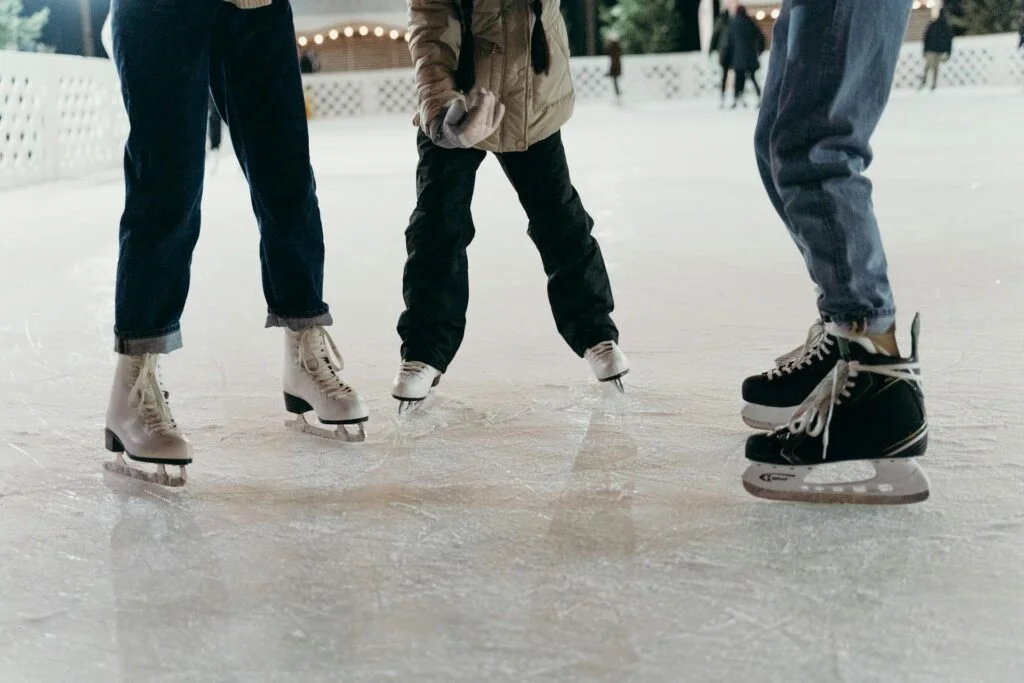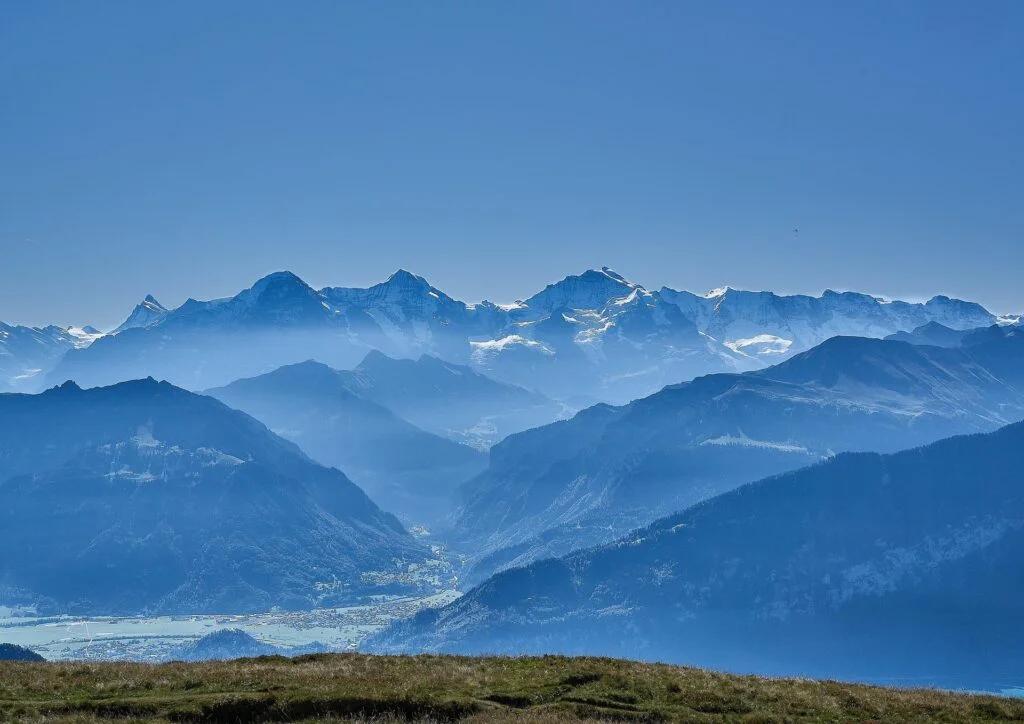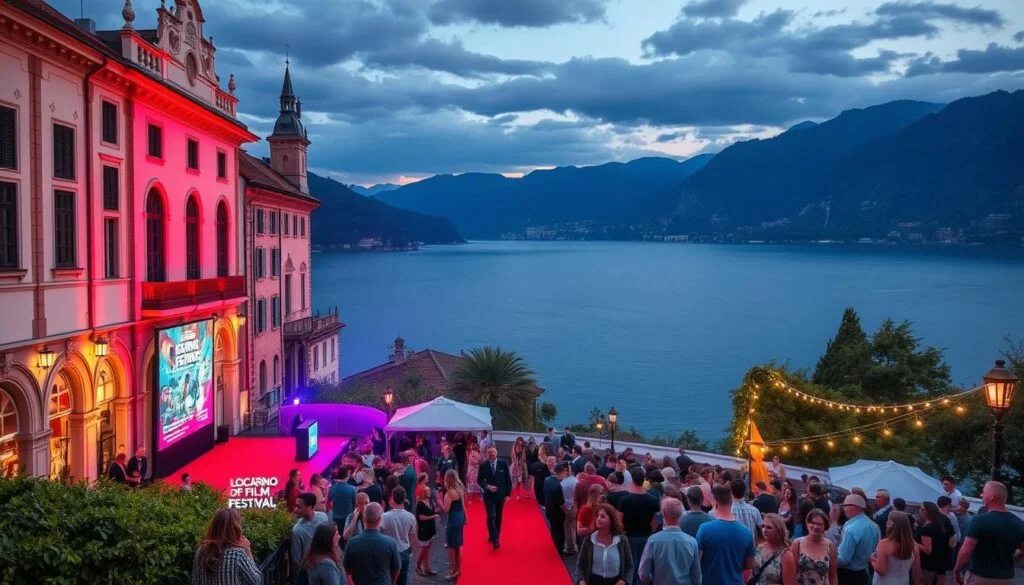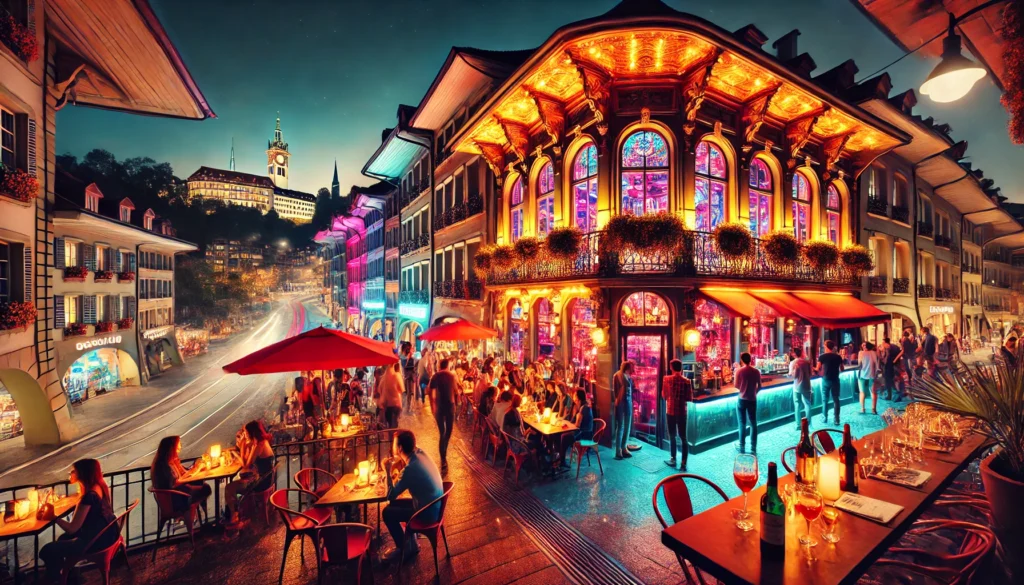Ice skating in the Alps offers breathtaking views and thrilling adventures. The region’s icy landscapes make it a perfect destination for skating enthusiasts.
Imagine gliding across a frozen lake surrounded by snow-capped mountains. The crisp air fills your lungs as you enjoy this winter wonderland. Ice skating in the Alps is an unforgettable experience. Whether you’re a beginner or seasoned skater, the Alpine region offers unique challenges and beauty.
But skating here isn’t just about skill; it’s also about preparation. Knowing the right tips ensures safety and fun. From choosing the best time to visit to understanding the local weather, being informed is key. Dive into these essential tips to make your Alpine ice skating adventure one for the books.
Best Time To Skate
Ice skating in the Alps is a magical experience. The stunning views, crisp air, and serene landscapes create the perfect backdrop for gliding on ice. But, timing is everything. Understanding the best time to skate can make your adventure unforgettable. Let’s explore the ideal months and weather considerations to ensure you have the best ice skating experience in the Alps.
Winter Months
The best months to skate in the Alps are typically from December to February. These are the peak winter months when the ice is at its finest. During this period, the conditions are perfect for maintaining thick, solid ice. Here are some key points to consider:
- December: Early December can be hit or miss. The ice might not be fully set in some areas. By mid to late December, most skating spots are ready.
- January: This is usually the coldest month. The ice is thick, and the conditions are ideal for skating.
- February: Temperatures start to rise slightly, but the ice remains good for most of the month. It’s less crowded than December and January.
During these months, the days are shorter, which means you can enjoy skating under the stars. Some locations even offer special night skating events. Check local schedules for these unique opportunities.
Here’s a quick comparison table to help you decide:
| Month | Temperature | Crowds | Ice Quality |
|---|---|---|---|
| December | -2°C to 2°C | High | Good |
| January | -5°C to 0°C | Medium | Excellent |
| February | -3°C to 3°C | Low | Very Good |
Weather Considerations
Weather plays a crucial role in your ice skating experience. Cold temperatures are essential for maintaining the ice. Here are some important weather factors to consider:
- Temperature: Ideal temperatures range from -5°C to 3°C. These temperatures ensure the ice remains solid and safe.
- Snowfall: Heavy snowfall can affect ice quality. Too much snow can insulate the ice, making it softer. Light snow, however, can enhance the experience, creating a winter wonderland.
- Sunshine: Sunny days are beautiful but can cause the ice to melt slightly during the day. Early mornings and late afternoons are the best times to skate on sunny days.
Monitoring the weather forecast is essential. Many alpine resorts provide daily updates on ice conditions. These updates include information on ice thickness, snow cover, and any potential hazards.
Here’s a simple guide to help you:
| Weather Condition | Impact on Ice | Best Skating Time |
|---|---|---|
| Cold (below 0°C) | Excellent Ice Quality | All Day |
| Sunny | Potential Melting | Morning/Evening |
| Snowy | Variable Quality | Check Local Updates |
By considering these weather factors, you can plan the perfect ice skating trip in the Alps. Always stay updated with local weather reports and ice condition updates to ensure a safe and enjoyable experience.
Choosing The Right Skates
Ice skating in the Alps is a magical experience. To fully enjoy it, you need the right skates. Choosing the right skates is crucial for comfort and safety. This guide will help you understand the different types of skates and how to find the perfect fit for your feet.
Types Of Skates
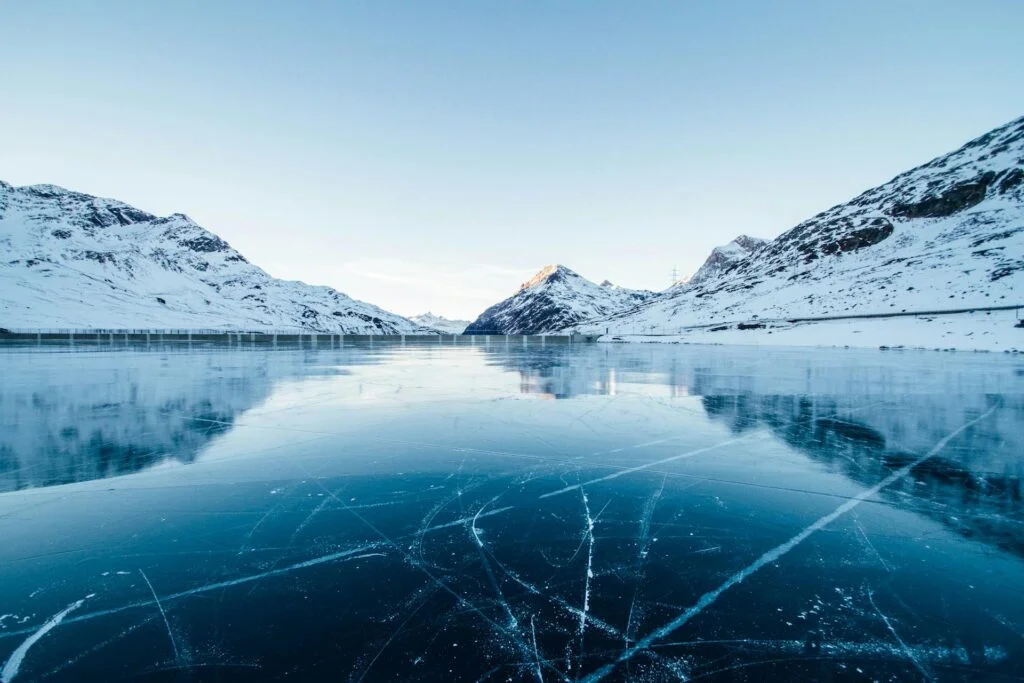
Understanding the different types of ice skates can help you make an informed choice. There are mainly three types:
- Figure Skates: These are perfect for artistic skating and performing tricks. They have a toe pick, which helps in jumps and spins.
- Hockey Skates: These are designed for speed and agility. They are sturdier and provide better ankle support, making them ideal for fast-paced skating.
- Recreational Skates: These are for casual skaters. They are comfortable and provide good support, making them suitable for beginners and those who skate for fun.
Here’s a quick comparison of these skates:
| Type | Best For | Key Features |
|---|---|---|
| Figure Skates | Artistic Skating | Toe pick, lighter, flexible |
| Hockey Skates | Speed and Agility | Sturdy, better ankle support |
| Recreational Skates | Casual Skating | Comfortable, good support |
Choosing the right type depends on your skating style and skill level. Think about what you will be doing on the ice before making your decision.
Fitting Tips
Proper fit is essential for a comfortable and safe skating experience. Here are some tips to ensure your skates fit well:
- Measure Your Feet: Use a measuring tape to measure the length and width of your feet. Compare these measurements with the skate size chart.
- Try Them On: Always try on skates before buying. Wear the same type of socks you will use while skating.
- Check the Fit: Your toes should barely touch the front of the skate. Your heel should stay in place when you move.
- Walk Around: Walk around in the skates to ensure they are comfortable. Bend your knees and check for any pressure points.
- Lace Them Properly: Tighten the laces from the bottom to the top.
If you are unsure about the fit, consider getting help from a professional. A good fit prevents blisters and improves performance on the ice.
Remember, your comfort and safety on the ice start with the right pair of skates. Take your time to find the perfect pair, and enjoy your skating adventures in the Alps!
Essential Gear
Ice skating in the Alps is a magical experience. The stunning scenery and crisp mountain air make it unforgettable. But to enjoy it fully, you must have the right gear. Essential gear keeps you warm and safe while enhancing your skating skills. Let’s explore the necessary clothing and safety equipment for this winter adventure.
Clothing Recommendations
Proper clothing is crucial for ice skating in the Alps. The weather can be unpredictable, so layering is your best friend. Here are some clothing recommendations:a
Here is a quick reference table:
| Clothing Item | Material |
|---|---|
| Base Layer | Moisture-wicking fabric |
| Mid Layer | Fleece or Wool |
| Outer Layer | Waterproof and Windproof |
| Pants | Waterproof |
| Socks | Moisture-wicking |
| Gloves | Insulated |
| Hat | Warm and Insulated |
| Scarf or Neck Gaiter | Warm and Insulated |
Safety Equipment
Safety is paramount while ice skating in the Alps. Here is the essential safety equipment you need:
- Helmet: Always wear a helmet.
- Knee Pads: They safeguard your knees from bruises and scrapes.
- Elbow Pads: Elbow pads prevent injuries during falls.
- Wrist Guards: Wrist guards are crucial. They protect your wrists from fractures and sprains.
- Skate Sharpening Tool: Keep your skates sharp. Sharp skates give you better control and reduce the risk of falls.
- Reflective Gear: Wear reflective clothing or accessories. They make you visible in low-light conditions.
Remember, safety gear is not optional. It can prevent serious injuries and ensure you have a fun and safe skating experience in the Alps.
Finding The Perfect Rink
Ice skating in the Alps is a magical experience. The snow-covered mountains, crisp air, and stunning scenery make it unforgettable. To make the most of your adventure, finding the perfect rink is crucial. Whether you prefer popular spots or hidden gems, this guide will help you discover the best ice rinks in the Alps.
Popular Locations
The Alps are home to many famous ice skating rinks. These locations offer great facilities and breathtaking views.
St. Moritz, Switzerland : Known for its luxury and elegance, St. Moritz has an outdoor rink that attracts skaters from around the world. The rink is set against the backdrop of picturesque mountains, making it a must-visit.
Chamonix, France: Chamonix boasts a large outdoor rink perfect for families and professionals alike. Its location near Mont Blanc ensures stunning views while you skate.
Innsbruck, Austria: Innsbruck offers several rinks, including the Olympiaworld Ice Rink. This rink has hosted numerous international competitions and provides top-notch facilities.
| Location | Facilities | Scenery |
|---|---|---|
| St. Moritz | Luxury, Outdoor | Mountain Views |
| Chamonix | Large, Outdoor | Mont Blanc Views |
| Innsbruck | Multiple Rinks, Indoor | City and Mountain Views |
Hidden Gems
If you prefer a quieter experience, the Alps also have lesser-known rinks. These hidden gems offer tranquility and unique charm.
Leukerbad, Switzerland: Leukerbad is a small village with a charming outdoor rink. It’s surrounded by mountains and has a cozy, intimate feel.
Val di Fassa, Italy : Val di Fassa is tucked away in the Dolomites. Its rink is less crowded, allowing for a peaceful skating experience. The dramatic peaks of the Dolomites add to the beauty.
Seefeld, Austria: Seefeld is a quaint town with a lovely outdoor rink. The rink is nestled in a valley, providing a serene setting for skating.
- Leukerbad: Small village, intimate setting.
- Val di Fassa: Dolomites, peaceful atmosphere.
- Seefeld: Quaint town, valley views.
Exploring these hidden gems will give you a unique perspective of the Alps. Their less crowded rinks ensure a peaceful and relaxing ice skating experience.
Skating Techniques
Ice skating in the Alps can be a magical experience. The clear mountain air and breathtaking scenery make it a must-do activity. To fully enjoy your time, mastering skating techniques is essential. Whether you’re a beginner or looking to improve your skills, understanding basic and advanced moves will help you glide smoothly and safely.
Basic Skills
Starting with basic skills is crucial for a good foundation in ice skating. Here are some tips to get you started:
- Balance: Keep your knees slightly bent and your weight centered over your skates.
- Posture: Stand upright with your head up and shoulders back.
- Stopping: Use the snowplow stop. Angle your skates inward and push outwards to create friction.
Here is a table summarizing basic skills for beginners:
| Skill | Description |
|---|---|
| Balance | Keep knees bent and weight centered |
| Posture | Stand upright, head up, shoulders back |
| Gliding | Push off with one foot, glide on the other |
| Stopping | Use snowplow stop, angle skates inward |
Focus on these fundamentals to build your confidence on the ice.
Advanced Moves
Once comfortable with basic skills, try advanced moves to enhance your skating experience:
- Crossovers: Use crossovers to turn corners. Lift one foot over the other and push.
- Backward Skating: Bend knees and push feet outwards. Keep weight centered and look over your shoulder.
- Spins: Begin with two-foot spins. Gradually progress to one-foot spins as you gain control.
- Jumps: Try simple jumps like the bunny hop. Bend your knees and spring off the ice.
Here is a table summarizing advanced moves:
| Move | Description |
|---|---|
| Crossovers | Lift one foot over the other to turn corners |
| Backward Skating | Bend knees, push feet outwards, look over shoulder |
| Spins | Start with two-foot spins, progress to one-foot |
| Jumps | Bend knees, spring off the ice |
Practicing these moves will help you skate with more confidence and style.
Staying Safe On Ice
Ice skating in the Alps can be a magical experience, but safety should always be a top priority. The stunning landscapes can quickly turn treacherous if you’re not prepared. Here are essential tips to stay safe on the ice.
Common Hazards

Skating on natural ice comes with unique challenges. Understanding these hazards can help you avoid accidents.
Watch out for:
- Thin Ice: Check the ice thickness before skating. At least 4 inches is safe for individual skaters.
- Cracks: Ice can crack under pressure. Avoid areas with visible cracks.
- Snow Cover: Snow can hide hazards like holes or weak spots.
- Weather Changes: Sudden temperature changes can affect ice stability.
Here’s a quick table to summarize common hazards and their signs:
| Hazard | Signs to Watch For |
|---|---|
| Thin Ice | Dark patches or visible water |
| Cracks | Lines or splits on the ice surface |
| Snow Cover | Uneven or soft spots |
| Weather Changes | Rapid temperature drops or rises |
Emergency Tips
Emergencies can happen even when you’re cautious. Knowing what to do can save lives.
- Signal for Help: If you’re with others, call out for assistance immediately.
- Move Slowly: If the ice cracks, distribute your weight by lying down and crawling to safety.
- Carry Safety Gear: Always have a whistle, rope, and ice picks. These can be lifesavers.
- Know Your Location: Be aware of your surroundings and know the nearest exit points.
Here’s a quick checklist for emergency preparedness:
| Item | Purpose |
|---|---|
| Whistle | Signal for help |
| Rope | Rescue tool |
| Ice Picks | Self-rescue |
| First Aid Kit | Immediate medical assistance |
Always skate with a buddy and keep emergency contacts handy. Your safety is paramount.
Local Etiquette
Ice skating in the Alps is an unforgettable experience. The crisp mountain air, stunning views, and smooth ice make it a skater’s paradise. To fully enjoy this, it’s important to understand and respect local etiquette. This ensures a safe and pleasant experience for everyone on the ice.
Skating Rules
Understanding and following local skating rules is crucial. These rules help maintain order and safety. Here are some common guidelines:
- Check the signs: Many rinks have signs with specific rules. Read them carefully.
- Stay in designated areas: Some sections are for beginners, others for advanced skaters.
- Follow the flow: Skaters usually move in a counter-clockwise direction. Stick to this flow to avoid collisions.
- Speed control: Keep a moderate speed. Fast skating can be dangerous.
- No rough play: Avoid aggressive skating and horseplay.
In some places, you might see different rules. Here is a table to help you understand what they might mean:
| Rule | Explanation |
|---|---|
| Skate in one direction | All skaters move in the same direction to prevent accidents. |
| No food or drinks | Eating or drinking on the ice can lead to spills and accidents. |
| Wear proper gear | Helmets, gloves, and other safety gear are often required. |
Following these rules keeps everyone safe. It also ensures that everyone has a good time on the ice.
Respecting Others
Respecting other skaters is key to a good experience. Here are some tips to keep in mind:
- Personal space: Give others room to skate. Avoid cutting too close to someone.
- Help beginners: If you see someone struggling, offer a helping hand. A little kindness goes a long way.
- Be mindful of speed: Fast skaters can intimidate beginners. Keep your speed in check.
- No loud music: Keep personal music at a low volume.
Here is a small guide to actions that show respect:
| Action | Respect Shown |
|---|---|
| Helping someone up | Shows kindness and community spirit |
| Skating around a group | Respects their space and avoids collisions |
| Offering tips to newbies | Encourages learning and builds confidence |
Respecting others makes skating more enjoyable for everyone. It creates a friendly and supportive environment. So, next time you hit the ice, remember these tips. They will help you and others have a great time.
Post-skate Activities
Ice skating in the Alps is a magical experience. The breathtaking views and crisp mountain air make it unforgettable. But the fun doesn’t have to end when you leave the ice. There are many post-skate activities to enjoy. Let’s explore dining options and ways to explore the area after a day on the ice.
Dining Options
After an exhilarating skate, satisfying your hunger is a priority. The Alps offer a range of dining options to suit all tastes and budgets. Here are some popular choices:
- Mountain Chalets: These cozy spots offer traditional Alpine dishes. Think hot fondue, raclette, and hearty stews. They are perfect for warming up after a cold skate.
- Gourmet Restaurants: If you crave something more refined, try a gourmet restaurant. Many of these establishments boast Michelin stars. Savor dishes crafted by top chefs using local ingredients.
- Casual Cafés: For a more relaxed meal, visit a café. Enjoy a hot chocolate, coffee, or a pastry. These spots are great for a quick bite and a warm drink.
Here’s a quick comparison of some popular dining options:
| Type | Average Cost | Popular Dishes |
|---|---|---|
| Mountain Chalets | $$ | Fondue, Raclette |
| Gourmet Restaurants | $$$$ | Fine Dining, Local Ingredients |
| Casual Cafés | $ | Hot Chocolate, Pastries |
Choosing the right place to eat enhances your Alps experience. Indulge in the region’s culinary delights to make your trip memorable.
Exploring The Area
The Alps are not just about ice skating. The region offers plenty of activities to explore post-skate. Here are a few ideas:
- Scenic Walks: Stroll through picturesque villages.aa
- Local Markets: Visit local markets to discover regional products. You will find cheese, cured meats, and handmade crafts.
- Historic Sites: Explore historic castles and churches. They offer a glimpse into the rich history of the region.
Many places offer guided tours. These tours provide more information about the area’s history and culture. They are a great way to learn and enjoy your surroundings.
For nature lovers, the Alps offer numerous trails and parks. You can go for a hike or a snowshoe walk. These activities allow you to experience the natural beauty of the mountains.
After a day of skating and exploring, consider relaxing at a local spa. Many resorts offer hot tubs, saunas, and massages. This is the perfect way to unwind and prepare for another day of adventure.
Frequently Asked Questions
What Are Some Tips For Skating?
Wear protective gear to stay safe. Practice balance and control regularly. Start with basic moves and progress gradually. Always skate in designated areas.
What Is The Trick To Ice Skating?
Balance and proper posture are essential for ice skating. Bend your knees slightly and keep your weight over your skates. Practice gliding and stopping to gain confidence.
Can You Ice Skate In The Alps?
Yes, you can ice skate in the Alps. Many alpine resorts offer ice skating rinks during winter. Enjoy breathtaking mountain views while skating.
What Trick Is Forbidden In Ice Skating?
Backflips are forbidden in competitive ice skating. This trick is considered too dangerous and is prohibited in competitions.
Conclusion
Ice skating in the Alps offers an unforgettable experience. Follow these tips for a fun and safe adventure. Practice regularly to improve your skills. Dress warmly to stay comfortable. Always check the weather and ice conditions. Respect local rules and guidelines.
Have fun and enjoy the breathtaking views. Share your experiences with friends and family. Create wonderful memories that will last a lifetime. So, lace up your skates and embrace the magic of the Alps.

